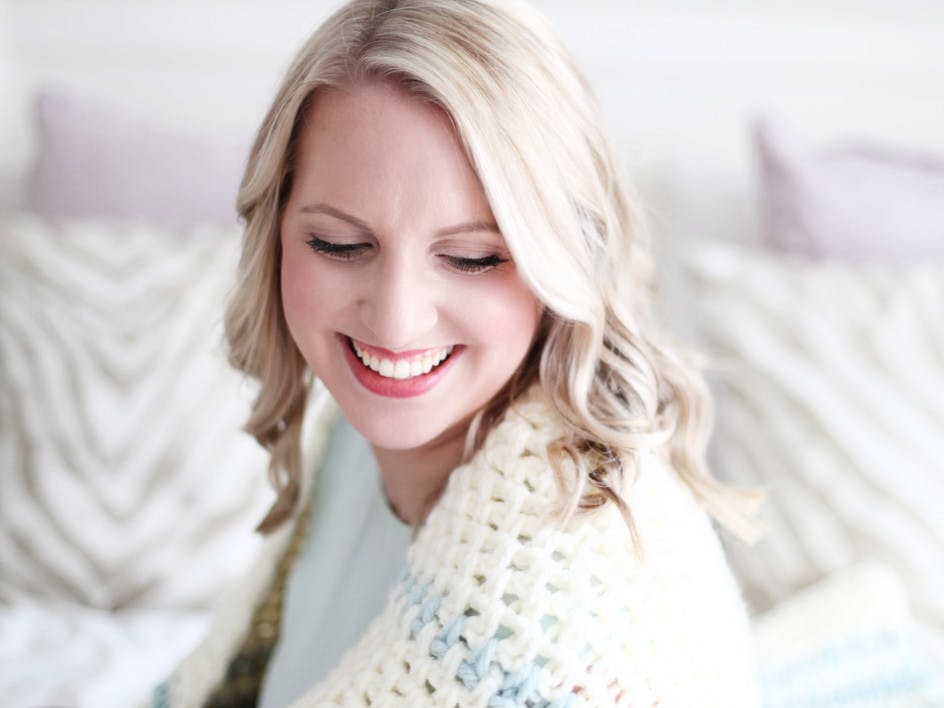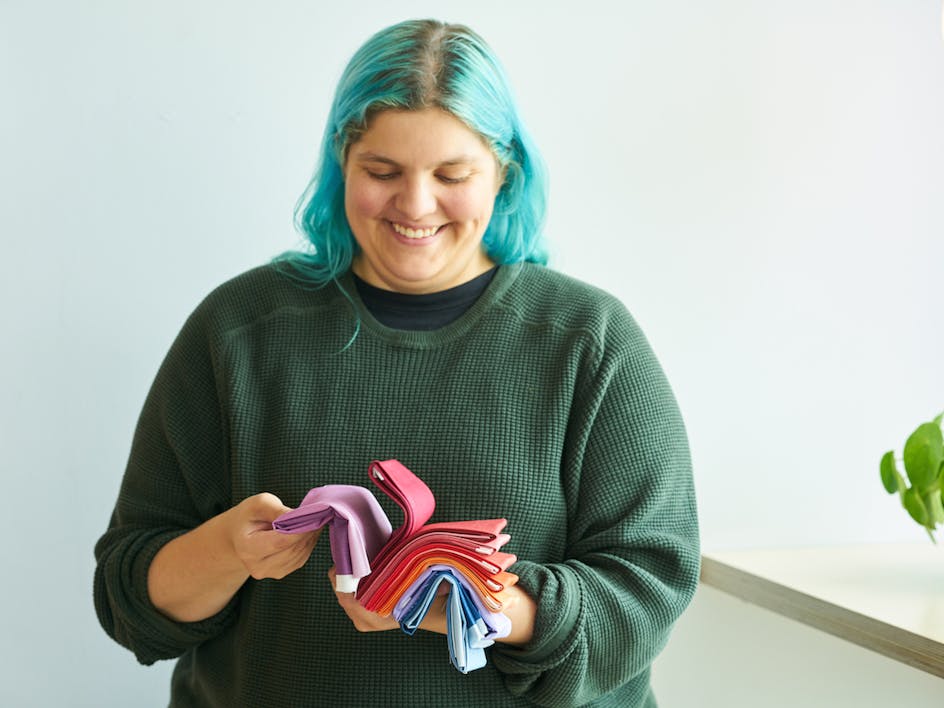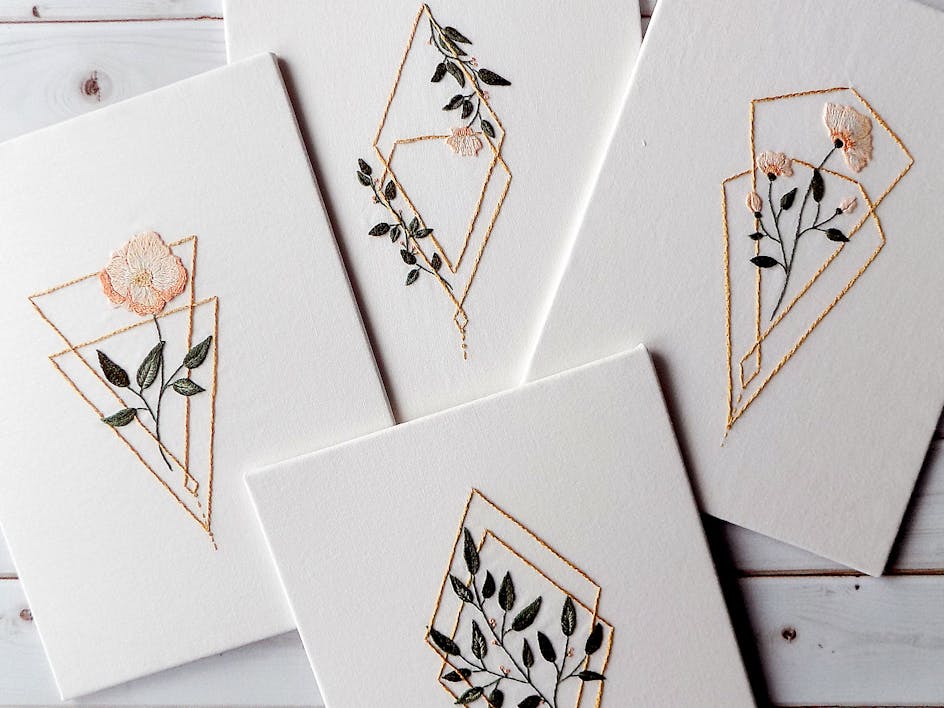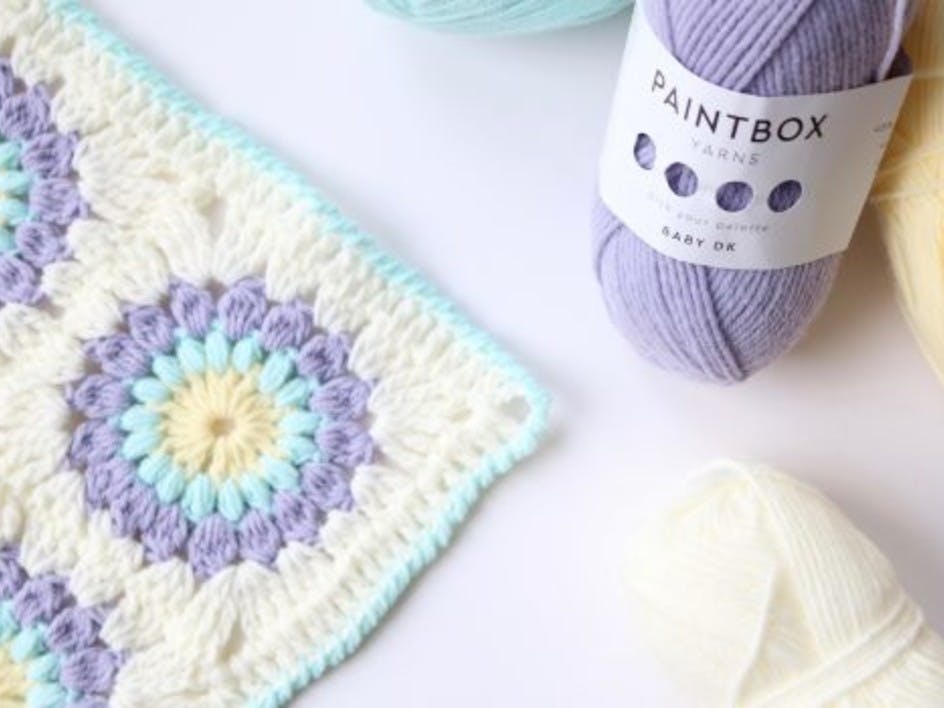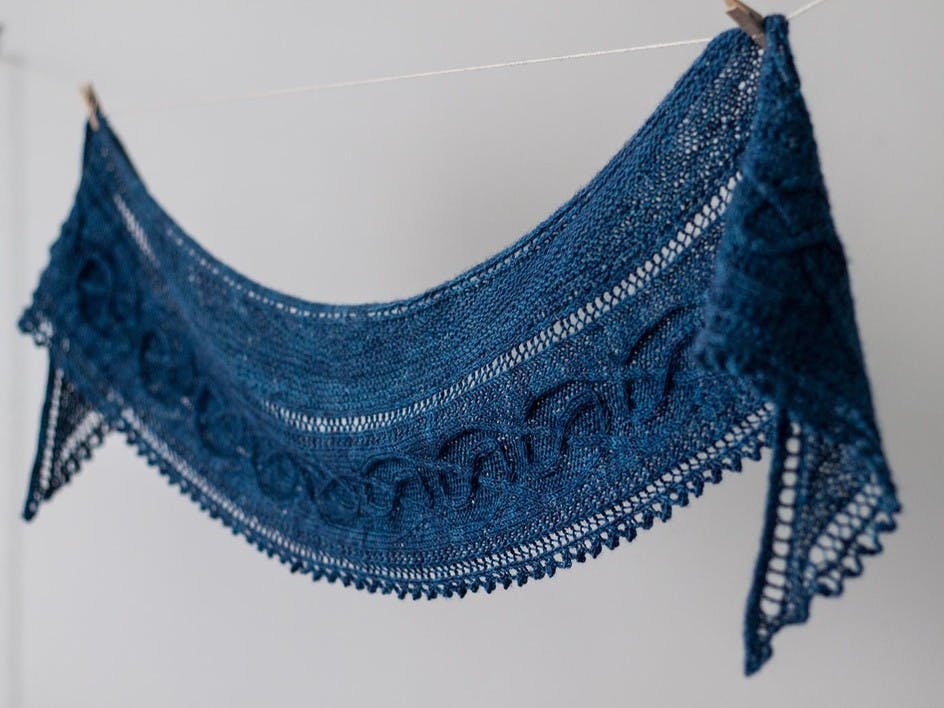Uploading and managing patterns
Published on 23 December 2024 14 min readReady to share your masterpieces with the world? Let's show you how to import your patterns from Ravelry as well as creating and editing your patterns. To do all this head to your Designer account here to get started!
Uploading your patterns
Start by logging into your Designer account which you can access here!
There are two ways to upload a pattern; you can either upload a pattern from scratch or import an existing PDF pattern from Ravelry. If you’re importing from Ravelry, you’ll need to add additional information, such as sizing and yarns, to the LoveCrafts listing.
We've done our best to make sure our upload process is as straightforward and easy as possible for you. To add a new pattern you’ll need to fill in all the data fields, upload the pattern PDF and at least one photo. We’d also encourage you to add the sizings and materials required and take time to make sure the category tags are correct (i.e. who the pattern is for, and what kind of pattern it is) – as this will help a customer to filter and find your pattern and obviously buy/download it!
If life gets in the way, you can save the pattern as a draft until later. When you’re ready to go again, and you’ve filled everything in, click to submit it to us for approval. Great job!
Pattern approval
We like to make sure everything looks right before going live with your patterns. Our team check there are enough details, make sure everything is named and that your description is looking good. We also work to make sure nothing is violating any of our terms and conditions and stopping your pattern from going live.
Our expert knitters and crocheters will aim to review your pattern within 5 business days (though we do try to do it in 1-2 days if we can!). Once your pattern has been approved you’ll be sent a confirmation email and the pattern will be available to buy on LoveCrafts within 24 hours, yippee! The status of your pattern will be updated in the Designer area so you can see that it’s published - go you, you awesome designer!
Pattern rejection
Sometimes we’ll need to ask you to make some tweaks to your pattern before we can put a pattern live. But don’t worry, if your pattern isn’t approved, we’ll email you explaining why and how to fix it. More often than not, it’s because something was missing from our pattern criteria. Whilst this happens, your pattern status will be changed back to ‘Draft’. Once you update your pattern with the suggested changes you can resubmit it for approval.
Importing Patterns from Ravelry
How to import an existing pattern from Ravelry
It’s actually super easy to import your existing patterns from Ravelry into LoveCrafts! Once you’ve signed in to your designer account, you can click ‘Import from Ravelry’ in the ‘My Patterns’ area or from your sidebar. This will then guide you through importing your patterns step-by-step. You can choose to import all your patterns at once, or select just a few at a time.
Once you have imported your patterns from Ravelry, they will have the status ‘Pending’ while the system brings across the information. Once this process is complete, you can edit your pattern listings. This is an important step as your imported patterns won’t automatically go live on our site!
Importing your patterns will automatically bring across your pattern PDF, images and description, but there is information that you will need to add and edit as it isn’t possible to match all the fields in LoveCrafts to those in Ravelry, stuff like yarns and sizing!
Pro Tip
Did you know that patterns are four times more likely to sell if they include yarns and sizing information? Wowza! So a really easy way to boost your sales potential is to make sure you add all that extra goodness to your pattern listing!
Re-Importing a pattern from Ravelry
If you’ve updated a pattern on Ravelry and need to re-import it, please note that the description field will not be re-imported. All other fields are transferred on re-import.
Actions needed on your pattern, after importing from Ravelry
Once your patterns have been imported from Ravelry, you’ll need to review and complete the following fields to optimise them for sales.
Sizing: You can add these to the sizing table to let customers know the measurements of the finished item.
Yarns: Now here’s an important one! Patterns are four times more likely to sell if you add the yarn information. Why is that? Because then we’ll more likely be able to feature them in our newsletters and social channels to coincide with yarn promotions. Plus, if you add the yarn, your patterns could also appear on the ‘Patterns featuring this yarn’ section of the yarn page! Scroll down to the bottom of this page onsite to see an example of what we mean.
Descriptions: These are a lovely way to add a touch of personality to your patterns. What was the inspiration? Any tips you can give? Just to let you know we have a 1,000-character limit, so if you’re importing from Ravelry make sure to check the description once it's live to see if you are happy with how it appears, as some might be cut off. Also, please do edit the descriptions if it mentions any Ravelry promotions which can’t be applied on LoveCrafts, so customers aren't left disappointed when they're unable to access this discount.
Needles and accessories: Make sure to add all the needles and accessories needed for this project in case customers need to stock up their stash.
For: Is this pattern for women? Children? Babies? This is useful to add so that it appears in the right categories.
Difficulty: This is super important! It’s not always easy to know whether you have the skill set to tackle a pattern, so this feature enables customers to gauge whether it’s for them.
Type of pattern: Check you’re happy with how your pattern has been categorised. Is it a blanket for the home or a baby blanket? Make sure you only tag the relevant categories!
Ravelry Import: Troubleshooting
If you are having problems with the Ravelry import, check out these likely scenarios:
This is an ebook. Only individual patterns can be imported from Ravelry at present.
For a pattern to be imported from Ravelry it has to be from a single pattern webpage with the corresponding pattern file(s). If you have multiple patterns creating an e-book you can upload the patterns individually or offer the complete e-book as a single pattern listing. Try uploading the PDF directly to LoveCrafts instead of importing the e-book.
There is no PDF associated with this pattern. Please add the pattern directly to LoveKnitting instead.
We’re sorry but if there is no pdf linked to the pattern we can’t import it. You can manually upload a pattern but it will not be published until a PDF has been added.
The pattern PDF is larger than our maximum file size of 100MB. Please replace your Ravelry PDF with a smaller file to import to LoveKnitting.
If the PDF you are trying to import is too large, try to reduce the file size
This pattern has already been associated with another LoveKnitting account.
If you can’t import your patterns and can’t see your previous patterns it’s possible that you have created a new account. If you are unsure of your login details, please email us and we’ll help you access your account.
About the pattern: “For” and “Pattern type”
Categorizing your patterns
Doing this correctly is really important. The tags that you add to your pattern will determine which filters are applied to it on-site, as well as which pattern categories it appears in. We have thousands of Independent Designer and brand patterns on-site, so help your customers discover yours by categorizing it accurately with the right tags.
When you are uploading your patterns, the second section you come to; “About the Pattern” has two “trees” of options in which to tag “Who is it for?” and “Type of pattern”. These are some of the required fields that you must fill in in order to submit your pattern for approval.
Logic is applied to these tags, such that if you select certain options, other options are then unable to be selected. This logic is applied to keep category tagging (and therefore on-site filters) accurate and was devised using existing pattern data and common intuition.
For example, when the “Adult > Plus-Size” tag is added to a pattern, you are then unable to select that the pattern is also for a Baby – this other option becomes un-clickable:
The tagging logic also applies to the “Type of Pattern” section below, following on from the options you tagged in “Who is it for?”. Options will again become un-clickable if they don’t follow the common logic.
For example, it won’t be possible to tag the Adult > Plus Size pattern as also being a ‘Pet Toy’ pattern:
By tagging your patterns accurately you are increasing your chances of sales by making them more discoverable, and also helping your customers to have a delightful browsing experience on-site.
Tips for categorizing correctly!
- Baby blanket patterns should always be tagged as Babies > Boys and Girls in “Who is it for?” then Homeware > Blankets & Throws in “Type of Pattern” – in order to appear in our auto-generated, highly popular, Baby Blanket categories on site.
- Toy patterns should always be tagged as Other > Other in “Who is it for?” then Other > Toys in “Type of Pattern” – in order to appear in our auto-generated toy categories
Adding yarn information
How to add recommended yarn
Adding recommended yarns to your pattern can help you to boost sales, as patterns that include yarns in the Materials sections are four times more likely to sell on LoveCrafts.
So how do you do it? Firstly, you’ll need to have entered the Sizing information to be able to add yarns.
Once that’s all done, go to Materials > Yarns section and start typing the name of your yarn in the field, then select the correct option from the dropdown menu, avoid typing the whole name free-form as the yarn must match up to our system to be recognized (It’s a particular little thing). Once you have selected the yarn name, thumbnails of the available shades for that yarn will automatically appear in the shade drop-down menu (as pictured below). If your design uses more than one shade, please enter them as separate yarns.
Do I have to recommend a yarn you stock?
We recommend you list a yarn we stock as it will help customers find your patterns on our websites. Pattern listings that include a yarn we stock in the ‘Materials’ section are likely to be shown on that yarn page under ‘Patterns featuring this yarn’ and will be seen by more customers. They will also benefit more from yarn promotions run by LoveCrafts.
Additionally, our customers love to be able to buy their patterns and yarns together and regularly get in touch with our Customer Smiles Team to ask for suitable substitutes that we sell.
If your sample was made in a yarn we don’t stock, we’d suggest stating the yarn the sample was made in the description, so customers know if they are buying the original yarn used or a suitable substitute.
Adding sizing information
Filling in the sizing table
If your final project is one size only, include its dimensions and unit of measurement in the ‘one size only’ box. If it’s a multiple size project, select this box and fill in the sizing table. Be sure to label what you're measuring against e.g. complete garment or the waist, so the customer is clear, as well as the unit of measurement you're using e.g. inches or age.
You can set your sizes as numerical or S, M, L. The table below includes some examples of how you may display this
Label | Units | Size 1 | Size 2 | Size 3 |
|---|---|---|---|---|
Age | n/a | 9-12 months | 1-2 years | 2-3 years |
Bust | inches (in) | 32-34 | 36-38 | 40-42 |
Getting sizing right for your customers
Helping customers to pick the right size to knit/crochet of your garment is really important, and will reduce the need for customer care and possibly refunds, later down the line. Firstly the measurements need to be relevant for the garment or accessory type. For example, hat patterns need to detail brim circumference, so that makers can find out if it will fit their head. Bust circumference is often used to determine a good fit for sweaters, but as these are more complex garments, length and sleeve length details are also needed. If the sweater is shaped and/or long we might also need to know the hip circumference.
There are so many different standards in displaying sizes, some logical, some less so. S, M, L are fairly universal, but they have no uniform definition so unit measurements are also needed for clarity. Size 10 means something different in the UK and the US, so again, more information is needed to make this size understandable. Some parts of the world use metric units, and others use imperial, so it’s always a good idea to give the measurement in both centimetres and inches.
If you look at your patterns from a customer’s perspective, can you figure out what size to knit from the sizing information on the pattern page? Adding finished size(s) and/or measurements is important for the customers to build up their expectation of the pattern.
Pattern difficulty
We classify our patterns into Beginner, Intermediate and Advanced level. Below you will find what we mean by these levels in terms of techniques for both Knitting and Crochet, to help you classify your patterns.
Pattern difficulty for knitting patterns
Beginner
- Cast on & off
- Knit & Purl e.g. Stocking & Garter stitch
- Simple increase & decrease
Intermediate
- Combinations of Knit & Purl e.g. Moss & Rib stitch
- Changing colour (Simple stripes)
- Picking up stitches
- Single cable pattern
Advanced
- Fair Isle
- Combination of cabling pattern
- Lace work
- Complex colour work
- Casting on from an angle
Pattern difficulty for crochet patterns
Beginner
- Chain
- Slip Stitch
- SC – Single Crochet (US) – DC – Double Crochet (UK)
- DC – Double Crochet (US) – TC – Treble Crochet (UK)
- HDC -Half Double Crochet (US) – HTC- Half Treble Crochet (UK)
Intermediate
- TC – Treble Crochet (US) – DTC – Double Treble Crochet (UK)
- Magic Loop
- Increases
- Decreases
Advanced
- DTC – Double Treble Crochet (US) – TTC – Triple Treble Crochet (UK)
- DCC – Double Cluster Crochet (US) – TCC – Treble Cluster Crochet (UK)
- Lace work
- Colour work
Managing your patterns
Making edits to published patterns
Once your patterns are published, you can update them at any point. Just go to your designer area, select ‘My Patterns’ and click on the pattern you would like to edit and update. FYI, if you do many edits it will need to be approved again before the changes are applied.
Feedback on your patterns
Our Customer Smiles team are here to help and will do their best to help your customers with any pattern queries they might have with your patterns. If a pattern issue needs to be escalated to you, the Smiles Team will reach out directly via your nominated contact email address in your Designers account. If the issue is restricting the making process and is likely to affect further customers, they may need to disable your pattern on-site until you have been able to resolve the issue. Our smiles team will let you know that the issue is and help you where they can.
In the unlikely event that a customer is unsatisfied with a pattern due to unresolved issues with its contents, we will need to issue them a refund and take the cost of which will come out of your next monthly sales payment.
Deleting patterns
Need to delete a pattern? No problem, you can do this in your designer account whenever you wish. After deletion, they won’t be visible on LoveCrafts.
If you would like to delete your Designer account entirely, please email designers@lovecrafts.com
